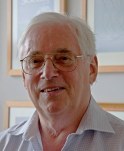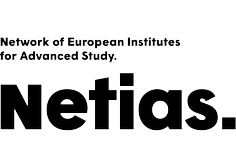12. Hermann Staudinger Lecture mit Nobelpreisträger John E. Walker

Energy and life
Nobel Laureate John E. Walker, Medical Research Council Mitochondrial Biology Unit, Hills Road, Cambridge, UK.
Nobel Prize in Chemistry, 1997
| Wann |
14.09.2012 von 16:15 bis 17:30 |
|---|---|
| Wo | Anatomie Hörsaal, Albertstr. 19, 79104 Freiburg |
| Name | Dr. Britta Küst |
| Teilnehmer |
öffentlich / open to the public |
| Termin übernehmen |
|
Energy and life
The extraction of energy from food and its conversion to a form that the body can use to provide fuel for all its activities, is essential for life. The key steps take place in the mitochondria, tiny organelles found in most cells. The mitochondria are surrounded by two hydrophobic membranes, and they use energy released by the controlled burning (oxidation) of sugars and fats to build up an excess of protons (hydrogen ions) between the two membranes. Almost all of the oxygen that we breathe in is consumed in this burning process. The mitochondria build up the proton excess with molecular pumps embedded in the inner membranes to displace protons from their internal spaces. Just as water stored in a dam provides energy to drive turbines in hydro-electric power stations, the mitochondria use the excess of protons to drive molecular turbines in their inner membranes. These turbines are connected to and supply power to molecular factories that turn out the energy currency of biology in the form of the molecule adenosine triphosphate, which is carried out the mitochondrion and made available to the cell. Energy is released for biological processes by controlled reaction of adenosine triphosphate with water. The products of this reaction, adenosine diphosphate and phosphate are returned to the mitochondria and recombined in the molecular factories to regenerate the adenosine triphosphate. We understand the precise construction and workings of the molecular factories. Our research is directed at understanding how the molecular turbines function and how the factory and turbine are linked together. We are also interested in understanding where these machines came from and how they have evolved. When these aims have been reached, we shall have revealed a fundamental process upon which life depends.
Further Information:
- Podcast
- Picture Gallery
- Report
please click on the picture below
Report on the 12th Hermann Staudinger Lecture with John E. Walker:
While attending the EBEC 2012 conference on bio-energetics (http://www.ebec2012.uni-freiburg.de/), Professor Sir John E. Walker, FRS, honoured the FRIAS and the university of Freiburg by holding the 12th Hermann Staudinger lecture. He presented an overview of his work, related his inspirations, and discussed bio-energetics as a whole…
John Walker studied chemistry in Oxford and received his Ph.D. in 1969. After a few years spent abroad he accepted an invitation in 1974 from Fred Sanger who at that time was sequencing mitochondrial DNA in Cambridge. From then on his work was dedicated to the fields of mitochondrial research and bio-energetics, at the Laboratory of Molecular Biology of the Medical Research Council. In 1997 he received, together with Paul D. Boyer, the Nobel Prize in chemistry for their brilliant insights into the mechanics of the ATP-synthase. He was knighted in 1999 for services to molecular biology, and as of this year is a holder of the Copley medal, the oldest, still awarded, medal from the Royal Society of London.
His lecture started with a simple question: “Where does our energy come from?”, and he provided us immediately with a simple answer: “From our sun”. Energy does not just appear on earth (in life or in our electricity network). The only source of energy readily available on this planet is that giant fusion plant, the sun. This energy is harvested and transformed by us to generate electricity, either directly with solar panels or indirectly with windmills or hydro-power. Also the fossil fuels, on which we rely so much, are just harvested sunlight. They are transformed carbohydrates that millions of year ago used to be life. The sun was used to convert inert CO2 into complex sugars and oxygen through electrosynthesis. These same sugars, that have changed into oil and gas, are also "burned" by all of eukaryotic life to generate ATP, the "electricity" of life.
Walker is fascinated by the insights leading up to the discovery of photosynthesis, mainly the discovery of oxygen, which is so vital to combustion. He even acted in a play on its discovery (Oxygen --- Carl Djerassi and Roald Hoffmann), in which the three pretenders to the title of "discoverer of oxygen", Lavoisier, Priestly and Scheele, are pitting against each other for a "retro" Nobel Prize. Walker played Priestly, of course, being both a Yorkshireman and holder of a Copley medal.
However, once oxygen and complex sugars materialize from the sunlight through photosynthesis, one needs to understand how cells convert them into usable energy. This is where Walker’s research comes into play. In the cells of all life on earth, ATP (Adenosine Tri-Phosphate) is used as an energy carrier; releasing its energy for many chemical reactions through the reduction to ADP (Adenosine Di-Phosphate, so the loss of one phosphate). These "chunks" of usable energy, however, need to be "recharged", and this happens in the mitochondria.
Mitochondria, a highly complex organelle (the cellular version of an organ), is the "power plant" of the cell. It "burns" the complex sugars and oxygen to recharge depleted ADP into ATP.
This process of "recharging" the ATP is performed by a highly complex molecular machine, the electron transport chain, which is located in the inner-membrane of the mitochondria. This “chain” culminates with the ATP-synthase, Walker was awarded the Nobel Prize for defining the structure of this ATP-synthase. The ATP-synthase embedded in the membrane, as Walker beautifully explained, acts as a turbine in a hydroelectric dam. The rest of the electron transport chain uses the chemical energy extracted from the complex sugars to pump protons "up the dam" (into the space between the two membranes). This creates a difference in potential between both sides of the dam. This insight is credited to an other Englishmen Walker admires deeply, Peter D. Mitchell, who against most of his peers defended his idea that this proton potential was providing the energy needed to synthesise ATP. His theory was so controversial that no normal publisher would accept his papers. Most of his ideas, which led to the Nobel Prize in 1978, were self-published in the so-called “Gray Books” in 1966-68. This proton-potential, generated by the transport chain, is now established, and used by the ATP-synthase to produce ATP.
As the work of Walker and his colleagues on the structure of the ATP-synthase reveals, it is a complex enzymatic structure remarkably similar to a turbine. It has a rotor that is brought into motion by the protons flowing through the synthase. This rotor drives a shaft-like structure that rotates the catalytic domain. This catalytic domain rotates inside a chamber similar to a Wankel engine, bringing together the ADP molecules into position and "attaching" the missing phosphate.
To combat one of the favourite arguments of creationists: the argument of irreducible complexity, Walker had to situate this discovery into the realm of evolution. The evolution of this protein complex might not be fully understood yet, but similar and simpler rotor-based protein-complexes are found across all the realms of biology. Being the most well understood, the bacterial flagellum, which is similarly driven by proton flow, shares some structure similarities, in conjunction with molecular data, is strong evidence for a continuous and modular evolution of the complex.
In general, the understanding of mitochondria, the electron transport chain, and bio-energetics is not only important for a better understanding of cell-biology, it also has possible direct impacts in medicine, as many mutations in mitochondrial DNA and the ATP metabolism are directly linked to neuromuscular and neurodegenerative diseases, which are of major importance in our ageing society. Walker continues to elaborate that the knowledge gathered in this endeavour can also impact one of the biggest issues of our society: the upcoming energy crisis.
Most of us are well aware,that our societies depend on fossil fuels. These are stocks of solar energy converted into carbohydrates that accumulated over 1000 million years ago, and we are burning millions of year´s worth of this stock annually. Inevitably this energy source will run out. The only way, according to Walker, to satisfy our greed for energy is to harvest sunlight more efficiently. He believes that a better understanding of bio-energetics will allow us to tailor and engineer biology to be able to do just that.
So many thanks from those of us fortunate to attend this lecture to Professor Walker for an informative and inspiring lecture.
(Moritz Buck)





